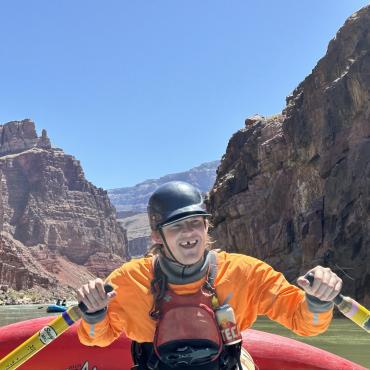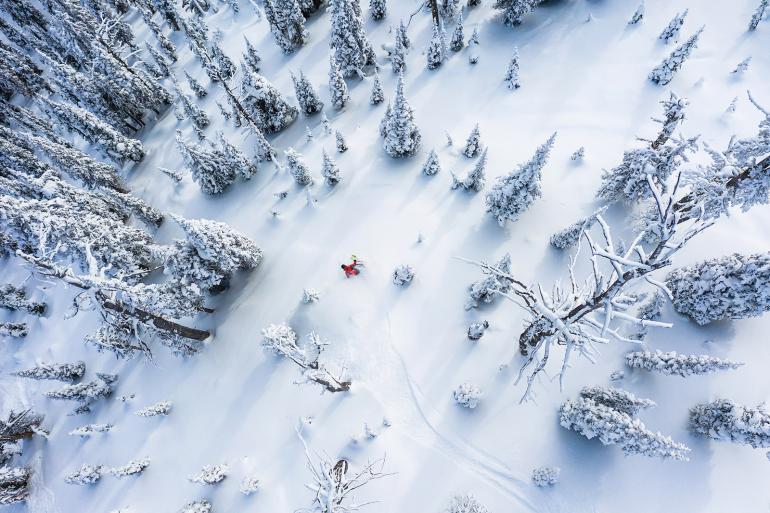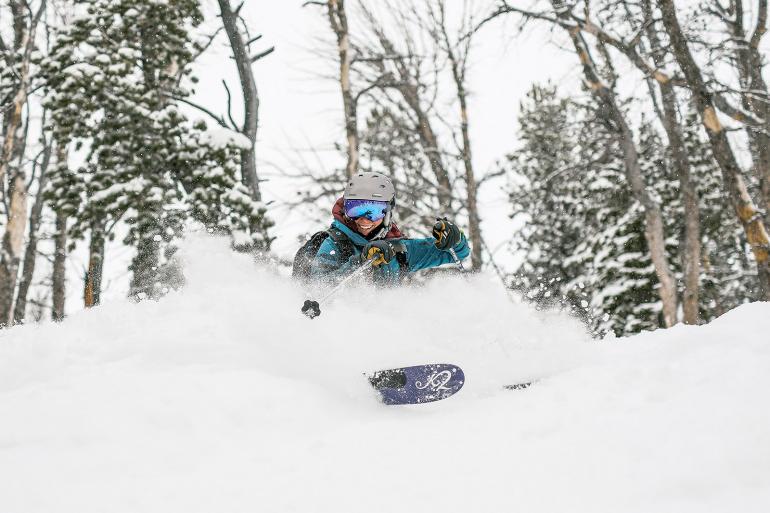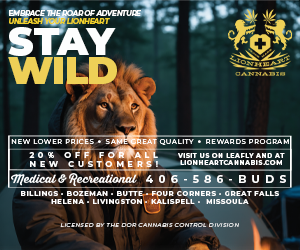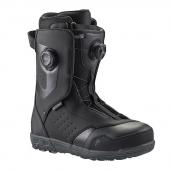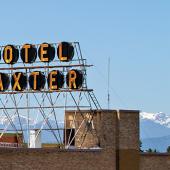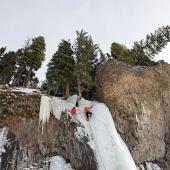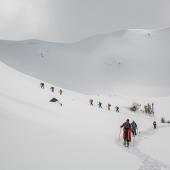Powder Fever
Diving into the Bozone's most popular winter activity.
If you asked 100 Bozemanites what their favorite winter activity is, the lion’s share would say skiing—downhill skiing, that is. Bozeman is a skier’s dream through & through, and with two world-class ski resorts within an hour from downtown, along with an abundance of backcountry terrain in every direction, it’s easy to see why. Regardless of whether you’re a soon-to-be shredder or already an alpine aficionado simply looking for some beta, you’ve come to the right place. So let’s dig into everything you need to know about skiing and riding in southwest Montana.
Bozeman is a skier’s dream through & through, and with two world-class ski resorts within an hour from downtown, along with an abundance of backcountry terrain in every direction, it’s easy to see why.
Where to Go
With winter already knocking on our doors, it’s easy to feel the first signs of powder fever setting in. You may begin pacing around your room, drooling over ski maps, and feverously watching ski & snowboard movies to quench your thirst. But there’s only one thing that can scratch that itch, and that’s rippin’ down the face of a snow-covered mountain. Thankfully, there are plenty of viable options.
Situated only 17 miles from downtown Bozeman on the east side of the Bridger Range is Bridger Bowl—the long time favorite for generations of southwest Montana skiers and boarders. Besides the obvious convenience (can’t beat a 25-minute drive to the mountain), Bridger’s claim to fame comes from its incredibly diverse terrain. There’s something for everyone: easy, beginner runs with moderate slopes; long, cruisy intermediate sections; steep moguls, gullies, trees, and traverses for more advanced skiers; and the ultimate side-country experience of all: The Ridge—the top quarter of the mountain accessible only by poppin’ off your skis and hiking up. Yup, it’s got it all.
But there’s much more for skiers here to enjoy besides Bridger. Big Sky—located roughly 50 miles south of Bozeman—is home to some of the greatest terrain in the country (and the record for most-skiable acres at one resort). Here you’ll find long runs, fast chairlifts, and one of the best terrain parks in the nation. But it all comes at a cost, and their prices are even steeper than the routes off the famed Lone Peak (a lift ticket will run you upwards of $250 a day).
Beyond Gallatin Valley, there are plenty of other ski areas worthy of note. Check out Discovery outside of Anaconda, Red Lodge Mountain southwest of Billings, Maverick Mountain near Dillon, and Showdown up by White Sulphur Springs. Out of state options like Jackson Hole and Grand Targhee can also make for a great weekend getaway, with both being roughly four hours away.
Backcountry
While chairlifts do have their perks, nothing beats getting fresh tracks away from the powder-hungry masses. If you’re looking for solitude—and a way to get your heart pumping—backcountry skiing is a great option. But remember that the risks of the backcountry can rival the reward. Always go with an experienced partner, and don’t be afraid to turn back if the conditions look menacing. For information on the conditions and weather, check out the Gallatin National Forest Avalanche Center’s (GNFAC) website.
Early in the season, ski areas like Bridger Bowl are great for honing your skills and getting your legs under you—just make sure to get out there before they start spinning chairs. You’ll need some extra gear—and possibly another set of skis—but we’ll get to that later. For information on local tours, check out the trails page at outsidebozeman.com/ski-tours.
Essential Gear
Unfortunately, skiing ain’t cheap, and if you want to partake in Bozeman’s favorite winter pastime, you’re going to have to cough up some dough. But that doesn’t mean you need to drain your savings account to hit the slopes. In early November each year, the Bridger Ski Foundation (BSF) hosts the Ski Swap—a community market for buying and selling used winter gear. There, you’ll find everything you could possibly need at a fair price, and 30% of every sale benefits BSF.
Skiing ain’t cheap, and if you want to partake in Bozeman’s favorite winter pastime, you’re going to have to cough up some dough.
It’s best to start building your set-up from the bottom up. First find a good, comfortable pair of boots. Boots are not only the most important piece of equipment in a skier’s arsenal, they’re also the most overlooked. During my time as a ski instructor, I encountered countless beginners with brand new skis and crappy, hand-me-down boots—needless to say, most of ‘em didn’t stick with it. There’s no substitute for comfort, and no two feet are the same. Don’t just buy something online because your buddy said to. Always try on a pair of boots before you buy ‘em, and be sure the fit is snug but not cramped.
Now it’s time to find a pair of skis. Beginners should start something in the 90-105mm underfoot range that reaches between the tip and bridge of your nose. When buying used skis, inspect the bases and edges for signs of excess wear and damage, but don’t fret over a couple dings or scrapes—those can easily be repaired by a ski shop. Most used skis will come with bindings, but if not, speak with a salesperson at a local ski shop and follow his or her recommendation. Once you’ve secured these big-ticket items, you can start looking for the cheaper, lower-priority gear like poles, goggles, and a helmet.
If you’re hoping to get into the backcountry, look for a pair of boots with “walk mode,” as they will make your tours significantly more enjoyable. You’ll also need a pair of lightweight AT bindings, or at the very least some frame bindings. Finally, you’ll need a pair of skins. Be sure to buy skins that are as wide as the widest point of your skis—not just your underfoot.
Backcountry skiers also need specific avalanche safety & rescue gear—beacon, shovel, probe, and backpack. If you don’t know how to operate your gear, consider taking an avalanche safety course through GNFAC (mtavalanche.com).
Etiquette
Unless you want to become persona non grata on the slopes, there are some things you ought to keep in mind. While some rules are meant to be broken, others—like those featured here—are there for a reason. First, it’s important to remember the mountain doesn’t belong to you, and everyone is up there to have a good time. Be courteous and thoughtful of others and practice the Golden Rule. On busy days with long lift lines, don’t be afraid to share a chair with strangers. Don’t ski in roped-off areas, and don’t be reckless in a way that endangers others. Always look where you’re going. Just because you’re okay with taking a high speed crash doesn’t mean that the grandma you barrelled into was.
Always look where you’re going. Just because you’re okay with taking a high speed crash doesn’t mean that the grandma you barrelled into was.
In the backcountry, remember that the skin track is sacred—don’t muck it up with boot tracks, and certainly don’t relieve yourself (or worse, let your dog relieve himself) in it. Respect the abilities of everyone in your group, and don’t take folks into terrain they can’t handle. Finally, take your speaker out of your damn backpack and buy a pair of earbuds—just because you think you have good taste in music, doesn’t mean everyone else wants to hear it.

